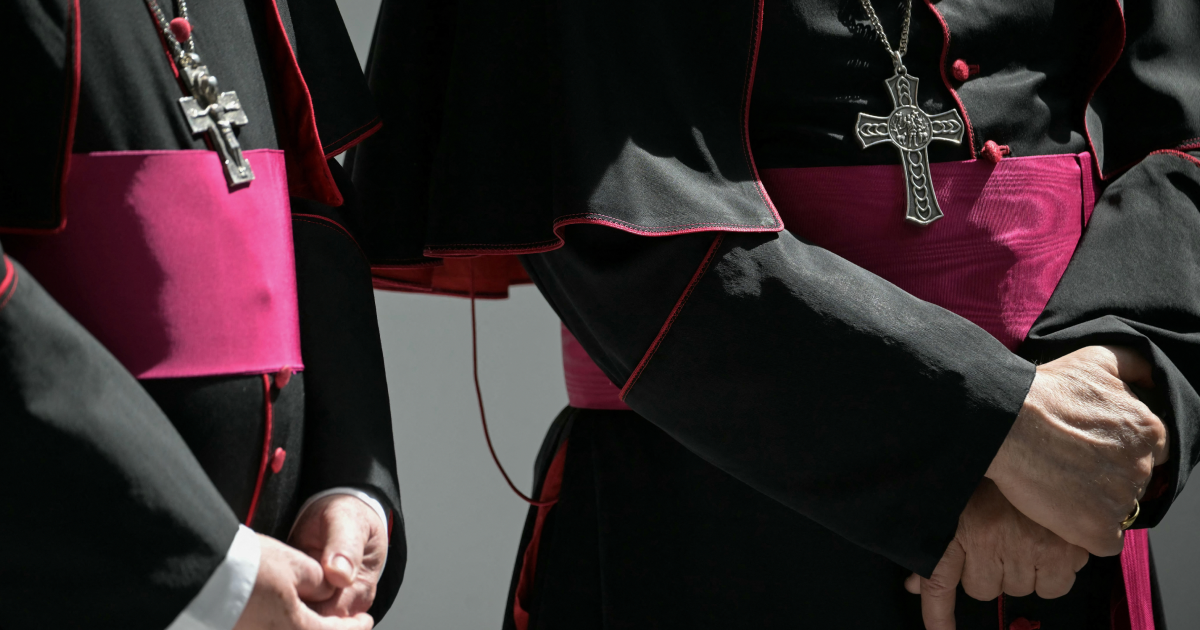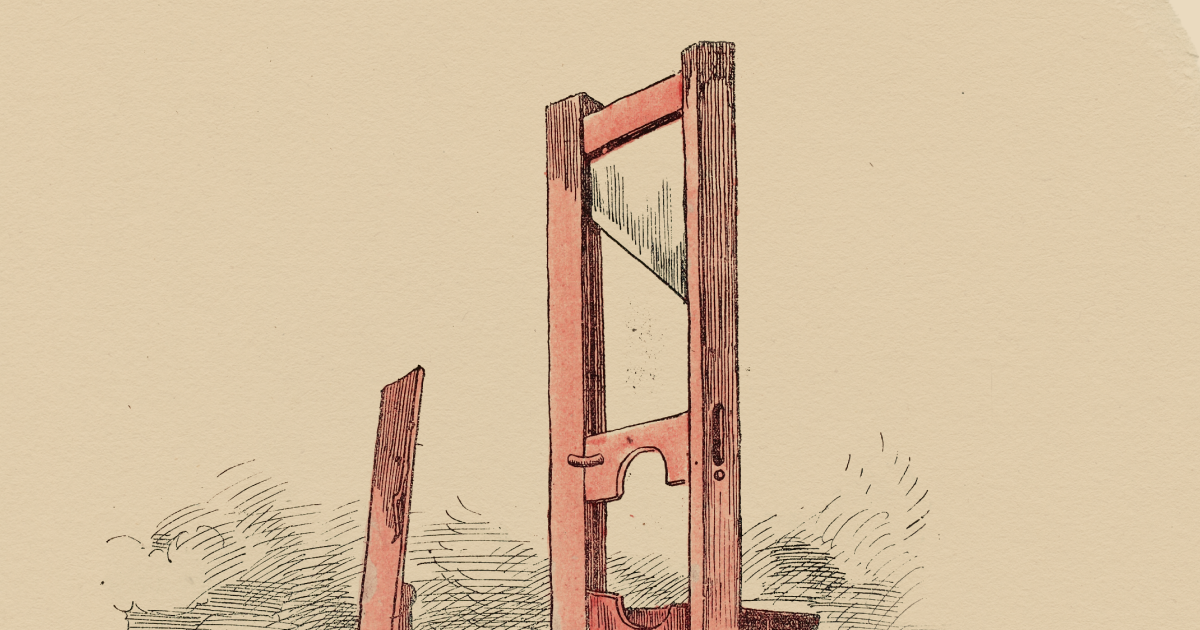Every now and then a chance encounter can change the way we see the world, and sometimes the direction of our lives.
One such occasion happened one wet Friday in February 2009 when I met Fr Dermot Fenlon at the Birmingham Oratory, the church founded by the Victorian Cardinal St John Henry Newman.
Fenlon was a very impressive man. A good friend of journalist and author Ruth Dudley Edwards, he had given up an illustrious academic career lecturing in history at the University of Cambridge to become a priest after discovering Newman.
I was there on other business, but Fenlon was excited to tell me in confidence that he was cooperating with German academics who had recently contacted the Oratory about his hero. Professor Gunther Biemer and Jakob Knab had found that Newman’s writings exerted a decisive influence on the White Rose, a German resistance movement whose leaders — including the 21-year-old Lutheran Sophie Scholl and her brother Hans — were guillotined in 1943 after urging students to rise up against “Nazi terror”. I was soon leaning on Fenlon to let me break the story as an exclusive, which he did.
Unlike other stories, I couldn’t forget it or move on. In fact, I have been thoroughly unable to detach myself from Newman’s “theology of conscience”. In my debut novel, The Beast of Bethulia Park, the priest Fr Calvin Baines is drawn as a devotee of Newman whose preaching of the theology of conscience motivates other characters. Fenlon, incidentally, was the first person I contacted when I thought up the title. He liked it, comparing it to a Chesterton or a Conan Doyle, but he didn’t read the book because he died in August 2022, a month before it was published.
On Saturday the teachings of Newman were elevated to the status of universal significance when Pope Leo XIV made Newman a Doctor of the Church.
There is no higher honour. This status is reserved for those few saints whose teachings are of vast importance to all people of all times and in all places. It is so rare an accolade that Newman is only the 38th Doctor of the Church in history and only the second Englishman after St Bede to join their ranks. It places the former vicar of St Mary the Virgin, Oxford, on a par with such luminaries as Ambrose, Basil, Athanasius, Gregory, Jerome, John of the Cross, Teresa of Ávila and Catherine of Siena. From a Catholic perspective, it makes Newman into England’s diamond, one of the most important Englishmen who have ever lived.
Often Doctors of the Church are awarded secondary titles to indicate the virtue or teaching in which they excelled. St Augustine of Hippo, for example, is the “Doctor of Grace”, and St Thomas Aquinas is the “Angelic Doctor”.
I am firmly of the opinion that Newman should be known as the “Doctor of Conscience”, and I am not alone. At a Rome symposium on the eve of Newman’s canonisation in October 2019, I heard Archbishop Anthony Fisher of Sydney make precisely that argument because Newman’s theology of conscience offers an antidote to the moral relativism convulsing many societies.
Newman did not believe in moral relativism. He believed that the natural law of God, encompassed in the Ten Commandments, is written on the heart of each human being, and that conscience is the internal voice that testifies to the objective moral truth of this law.
In true Aussie fashion, Fisher explained that to Newman conscience was not an “inbuilt satnav” or like the good angel whispering advice on the shoulder of Fred Flintstone. Rather, it is a key element of the mind, like perception, reasoning and judgement, and its “primary function was the rational judgement of the moral senses”.
“We were created to know the truth and find in that truth the ultimate freedom and deepest fulfilment,” said Archbishop Fisher, before referring to the White Rose as an example of how sometimes obedience to the truth can cost everything.
So how precisely did Newman, who died in Birmingham in 1890, influence a small group of dissident Germans in the Second World War?
The seeds were sown when Theodor Haecker, an authority on Søren Kierkegaard, the Danish Lutheran philosopher and theologian, wrote to the Birmingham Oratory in 1920 to ask for a copy of The Grammar of Assent, Newman’s work on the philosophy of faith, so he could translate it into German. In the following two years a further ten works of Newman were dispatched to him.
Haecker believed that Germany was fertile territory for Newman’s ideas because they complemented the fashionable phenomenological philosophy and could therefore be “fully understood and deservedly appreciated by the educated class of my country”.
He was right. A succession of eminent German theologians and philosophers of the inter-war generation, such as Dietrich von Hildebrand and Edith Stein, were soon enthusiastically studying and teaching Newman.
The Nazis’ in-house philosopher, Martin Heidegger, silenced Haecker, who nonetheless continued to translate Newman in the belief that he was a prophet in an age of infidelity whose writings could speak to people “deeply in need of a response adequate to the conditions of totalitarian anti-Christianity”.
When the Second World War came, Haecker saw it as a “war of religion” because it was a struggle about the fundamental truth of the human person — with Germany on the wrong side. It was through Haecker that the White Rose group learned of Newman’s theology of conscience.
About 20 years ago, Biemer and Knab analysed the diaries and letters of Sophie Scholl and examined the anonymous leaflets sent out in random mailshots by the White Rose. They concluded that the influence of Newman’s theology of conscience is plain to see, with Newman’s homilies sometimes quoted verbatim.
The contents of the fourth leaflet were described by Fenlon, for example, as “pure Newman”. They borrow heavily from Newman’s homilies on the Antichrist, where he explains how Christians watch throughout history for the Second Coming of Christ against a series of ante-types of the figure who will eventually lead the final persecution of God’s people. In the eyes of the White Rose, Adolf Hitler was one such type.
“True, we must conduct a struggle against the National Socialist terrorist state with rational means,” the leaflet said. “But whoever today still doubts the reality, the existence of demonic powers, has failed by a wide margin to understand the metaphysical reality of this war. Behind the concrete, the visible events, behind all objective, logical considerations, we find the irrational element: the struggle against the demon, against the servants of the Antichrist.”
The leaflets go on to argue the futility of attempting to combat evil alone. “Without the true God [a person] is defenceless against the principle of evil,” the leaflet says. “He is like a rudderless ship at the mercy of the storm, an infant without his mother, a cloud dissolving into thin air.”
This is hardly the stuff of politics. However, as the White Rose progressed it became more overtly political and less religious as its members sought to align themselves with the wider resistance movement.
Following the first wave of executions — of Sophie and Hans and Christoph Probst, a member of the group baptised just minutes before his death — Haecker visited the Scholls’ parents, Magdalene and Robert, who had been imprisoned under the Sippenhaft law that made them accountable for the crimes of their children. It is of huge significance that Haecker signed the visitors’ book with Newman’s motto, Cor ad cor loquitur (“Heart speaks to heart”).
Newman’s teachings, meanwhile, were rippling out indirectly because of the courage of the White Rose. Just six weeks after the executions, an army officer arrived at the First General Military Hospital in Munich for surgery to shrapnel wounds following an attack by an Allied aircraft in North Africa in which he had also lost an eye, his right hand and two fingers of his left hand. While recuperating he asked about the White Rose. His name was Claus von Stauffenberg, and his attempt to “rise up against Nazi terror” is legendary.
Haecker survived the war but died from diabetes in 1945, just as Newman was captivating a generation of post-war German Catholics.
Among them was Joseph Ratzinger, who began to study Newman’s theology of conscience in 1946 when he entered a seminary in Freising.
“For us at that time, Newman’s teaching on conscience became an important foundation for theological personalism, which was drawing us all in its sway,” the future Pope Benedict XVI would later explain. “We had experienced the claim of a totalitarian party which understood itself as the fulfilment of history and which negated the conscience of the individual. One of its leaders had said, ‘I have no conscience. My conscience is Adolf Hitler.’ The appalling devastation of humanity that followed was before our eyes.”
Benedict XVI went on to emerge as the most authentic interpreter of Newman’s theology. He taught that Newman’s life “could be designated a single great commentary on the question of conscience”, noting that the silencing of conscience “leads to the dehumanisation of the world and to moral danger”.
Fr Fenlon once complained to me that there are many senior Catholics who have for years tried to pull out Newman’s fangs because his teachings make them uncomfortable. This is an impulse which must be resisted more than ever. The failure to acknowledge Newman’s true contribution would be a sin of omission.
Simon Caldwell is the author of The Beast of Bethulia Park and Lady Mabel’s Gold. This article is reproduced with the kind permission of The Conservative Woman.







.png)








